By Tracy Record
White Center Now editor
From fighting graffiti vandalism to forming block watches to learning where legal marijuana stands, about 40 people got a more-than-full serving of public-safety information last night at the North Highline Unincorporated Area Council‘s quarterly forum.
Here’s how it went:
LIQUOR (AND MARIJUANA) CONTROL BOARD UPDATES
Tim Thompson from the Washington Liquor Control Board started off by warning he didn’t have much information about marijuana, referring to the I-502 rule-drafting process now under way (including public forums, with an updated schedule). You can get all the latest in this section of the WALCB website.
No specific current liquor cases were discussed. (If you need to contact Thompson to report a problem, 206-439-3739 or TAT@liq.wa.gov.)
Asked how privatization is going, he mentioned there are about 1,000 retailers now and still growing, at least over the next two years – “after that, we’re not sure where that’s going to go,” regarding the current restriction to spaces 10,000 square feet or more (unless it was a grandfathered ex-liquor store).
He mentioned that the trend of liquor thefts was on the wane; if you find any bottle locking mechanism disposed of – it can be tracked by matching it to the store from which it came, so contact the LCB (or other law enforcement).
MORE ABOUT MARIJUANA
What’s it like on the front lines, as a sanctioned recreational-marijuana industry forms, while the medical-marijuana industry forges forward?
Chris Cody of Herban Legends in downtown White Center said, “Up till now, it’s been very Wild West-y … I’ve done my best to be as conscientious as possible,” and he’s even been part of a coalition working on “cannabis standards and ethics,” which he says they are trying to convert into legislation in Olympia for a “more formalized system.”
He foresees that the medical-marijuana industry might go away completely as part of all this – and says that will be a shame because “if you think liquor is taxed now – ” he envisions even higher marijuana taxes.
“A lot of the places that are open now, (probably) won’t be open in a year.”
One attendee asked about testing standards at shops, saying she needs it for insomnia – she quit smoking marijuana 40 years ago “because it put me to sleep” and now that’s exactly the effect she’s looking for. She suggested that recreational users might appreciate analysis of the different strains’ contents and strength, too.
Asked where his supplies come from, Cody discussed the “collective gardens” with which they deal, and how he checks on what they use while growing.
In a wide-ranging Q/A, he was asked if major pharmaceutical companies are likely to jump into the marijuana business. He didn’t think so, unless it was reclassified at the federal level (where, despite legalization in our state and elsewhere, it remains illegal).
Overall, Cody believes, “This is going to be a boon for Washington – whether you like it or not – it’s going to bring people here from all over the world.”
Invariably, before the discussion ended, somebody asked if Cody had samples. Giggling ensued. NHUAC president Barbara Dobkin moved the agenda along.
GRAFFITI VANDALISM / “BROKEN WINDOWS THEORY”
Burien police Sgt. Henry McLauchlan, a 35-year veteran with the King County Sheriff’s Office, first marveled that he never expected to find himself following up a discussion about legal marijuana shops. He had praise for Cody trying to rationally and responsibly work through the issues.
Then – to the “broken windows theory” – the domino effect if one bit of vandalism or disrepair is left unattended to.
While examples of tagging were being shown, someone called out a certain prolific vandal’s name. “Gonna get that j*****s one of these days,” Sgt. McLauchlan laughed. He also mentioned that Facebook is a tagging-fighting tool – since the vandals “love to brag,” and the investigators know how to find what they post.
But the front-line defense is up to property/business owners:
“The only response you can have is to get it painted out as fast as possible,” he exhorted attendees. He also explained that taggers are showing off, but gang-graffiti vandals are marking their territory.
Veering off the track for a moment, he discussed the concept of responsibility – saying that gun control doesn’t seem to him a matter of how many guns you have, as long as you’re responsible and nobody else can “get their hands on them.”
Burien, for example, has an ordinance requiring people to clean up graffiti.
Some of the vandalized unincorporated-area properties photographed by NHUAC president Dobkin included the former Bernie and Boys, the former El Chalan/Wendy’s/Ezell on 16th, the old NAPA building, and some other sites in areas including Top Hat. “It just doesn’t bode well for a community,” Dobkin lamented. “And then people start (illegally dumping on the site) …” NHUAC councilmembers and volunteers have periodic paintouts, and also engage state Department of Corrections-provided crews are engaged by KCSO when possible.
What about property owners who are sent repeated letters about violations/concerns? County Councilmember Joe McDermott, who was on hand for the entire meeting, said it was complicated, once people wind up being summoned to court.
He was challenged by a community member who expressed frustration that “we’ve been putting up with this for years” (regarding the business properties) – at which point McDermott said he’s drafting a letter himself to contact the property owners (ostensibly the El Chalan site owners, listed as NB Partners LLC, which traces in county records to Mark and Tom Nickels).
Sgt. McLauchlan then recounted how he and his teams worked on shutting down muisance multi-family properties, and “It’s a nightmare.” He suggested, though, that publishing the names of the nuisance property owners might have some effect. How to go about that?
One attendee then said it was a shame that Burien annexation hadn’t passed, since that municipality has tougher laws than the county itself. Later, Sgt. McLauchlan went on to detail the difficulty of catching graffiti vandals in action. Is there another way for them to express their creativity? one person asked. One woman said she hopes to start a “White Center as an art zone.” campaign.
If you have graffiti problems – contact NHUAC for advice on how to handle it! (Lots of info on their site at northhighlineuac.org.)
DEPUTY MYERS’ UPDATES
White Center Storefront-based Deputy BJ Myers took the spotlight next. He says there’s been a high level of auto thefts for many months and one detective is now taking the lead on most of the investigations. He’s been analyzing patterns, seeing themes, and working on ways to catch the auto thieves before they steal the cars. Myers said “small groups of thieves stealing many cars” is what they believe they are seeing the most.
By the way – one way to reduce auto thefts, he suggested, is: Don’t leave your car idling while it’s warming up; one investigator “is getting tired of reading those reports!” Myers said.
Mail theft also has been high in the past month – but “we’ve also caught and identified some mail thieves,” as has Seattle Police‘s Southwest Precinct, said Deputy Myers, “so hopefully those numbers will start moving down.” In areas where are non-locking mailboxes, they’ll find “piles of mail at the end of the street,” he said.
He also shared detectives’ requests to document serial numbers on expensive items – electronics, tools, etc. Could be as easy as taking a photo of your items. And be sure to keep that photo – or the info, otherwise documented – someplace you can find it no matter what happens! And he talked about suspects who can be one-person crime waves, like someone who stole a car, then went and stole a lawn mower, and had committed about five thefts before he was caught.
“How did you catch the mail thieves?” Deputy Myers was asked. Answer: Somebody called in a tip, seeing someone looking in a mailbox that wasn’t theirs. He said that’s almost always the way it goes.

He mentioned the recent serial robberies; the robber is pretty well covered up, so it’s tough, but they’re working on it, Deputy Myers said, noting that nobody has been hurt – yet – and the heists have tended to happen late in the evening. The detectives in the Major Crime Unit are working on it. “I think we’re going to catch this guy,” he said.
BLOCK WATCHES
Burien Police Community Service Officer Nicki Maraulja brought longtime volunteers Patty and Pam to talk to the group about how Block Watches work; they are members of the Burien Citizens’ Patrol: “It starts small but has a big impact.”
They mentioned North Highline’s late Barb Peters as an example of somebody “so involved” in their local community, full of personal responsibility.
The size of a “block” for a Block Watch is not necessarily rigorously defined, the volunteers said. They talked about time-proven tacics of dealing with possible suspicious folks in the neighborhood – go up to them, talk to them, ask them how they’re doing. She also advocated setting up websites or groups for neighborhoods.
But first – be sure you have a block watch! Asked how many people in the room have one, close to half of the 40 or so raised their hands. The unincorporated area has about 25; Burien has more than 120.
One person suggested they might set a goal of doubling the number of block watches this year.
Informational booths at community events “are a great way to reach out to your neighbors,” too, the volunteers had.
If some neighbors don’t want to participate – don’t let that stop you, they urged. “Just do it.”
Officer Maraulja said, “It’s fun,” and the volunteers mentioned Night Out, getting together wth your neighbors, etc.
E-mailing her is the best way to organize a Block Watch.
“The more people you have watching out for each other, the better – don’t wait till something happens.”
FINAL WORDS
Sgt. McLauchlan said the four most important words on the topic of public safety are:
AWARENESS – it’s simple, if you’re not awareness of your surroundings, you can’t help your neighbors, you can’t help yourself.
AVOIDANCE – Be the eyes and ears (though don’t get TOO involved, and don’t confront a criminal – “that’s why you have 911.”
KNOWLEDGE – that’s a Block Watch, a Crime Prevention meeting, “a lot o things’ – including personal responsibility. (and call 911 when you see something suspicious)
PREPARATION – work together – put together Block Watches – make this work for you – if you do, “it’s going to make this a lot nicer place to be.
Thursday, May 2nd, is the next forum, location TBA, with a guest lineup topped, says NHUAC president Dobkin, by Sheriff John Urquhart.



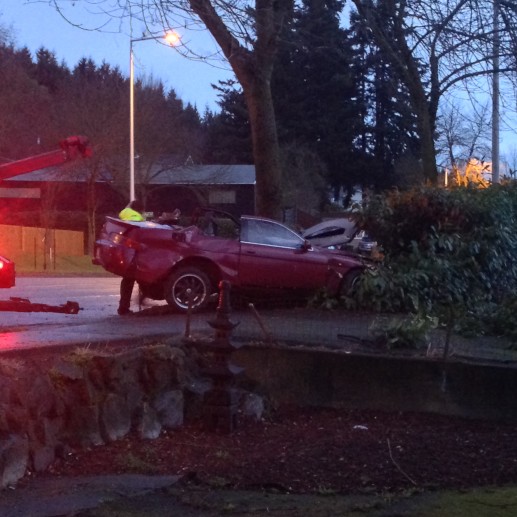


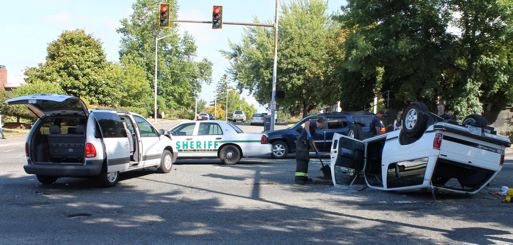
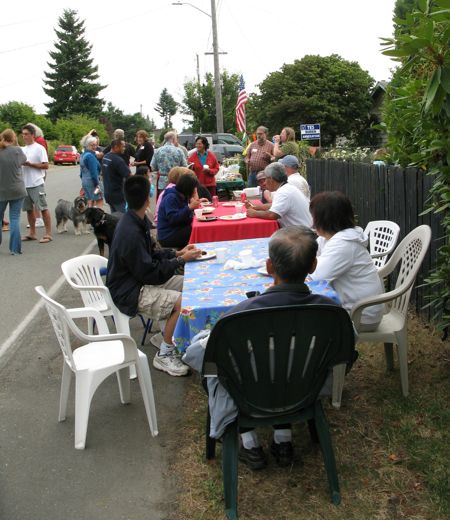
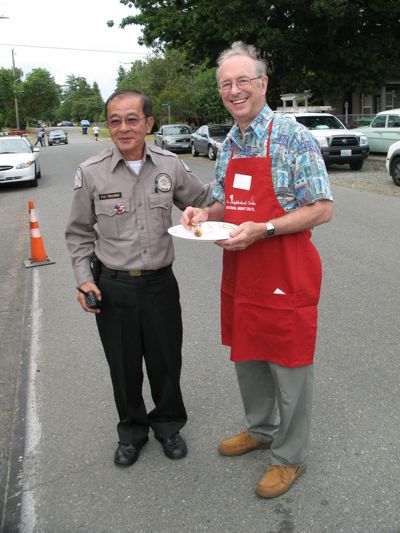
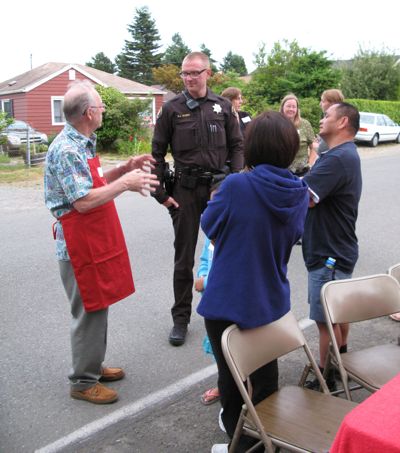
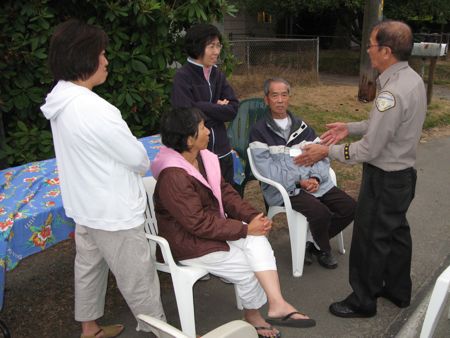
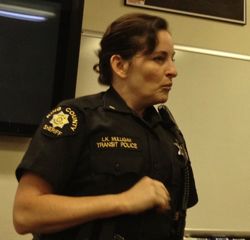 METRO TRANSIT POLICE CHIEF LISA MULLIGAN: Rather than launching into a speech, Chief Mulligan – who is also a Major in the King County Sheriff’s Office – started by engaging attendees in conversation, asking which routes they ride (answers included 120, 125, 113, 3, 4, 550, 216, 54, 55, 516), and whether they’d ever had a bad experience on a bus. Fare evasion and rudeness were mentioned. She leads 69 Metro Transit Police Officers, all of whom also are deputies, assigned specifically to Metro, stationed from an HQ in SODO. Almost half are patrol officers, but there also are anti-terrorism officers, captains, sergeants, bicycle officers … “We are so proud of what we do with what we have,” she said, while noting clearly that they are spread pretty thin. However, “we’ve gotten pretty good at figuring out where our bus drivers and passengers say the problems are.” They track reports written by drivers about trouble during shifts, “and that’s how we police.” Every month they have a top 10 list “based on the number of security-incident reports,” and 120 is consistently on the trouble list, “almost every month.”
METRO TRANSIT POLICE CHIEF LISA MULLIGAN: Rather than launching into a speech, Chief Mulligan – who is also a Major in the King County Sheriff’s Office – started by engaging attendees in conversation, asking which routes they ride (answers included 120, 125, 113, 3, 4, 550, 216, 54, 55, 516), and whether they’d ever had a bad experience on a bus. Fare evasion and rudeness were mentioned. She leads 69 Metro Transit Police Officers, all of whom also are deputies, assigned specifically to Metro, stationed from an HQ in SODO. Almost half are patrol officers, but there also are anti-terrorism officers, captains, sergeants, bicycle officers … “We are so proud of what we do with what we have,” she said, while noting clearly that they are spread pretty thin. However, “we’ve gotten pretty good at figuring out where our bus drivers and passengers say the problems are.” They track reports written by drivers about trouble during shifts, “and that’s how we police.” Every month they have a top 10 list “based on the number of security-incident reports,” and 120 is consistently on the trouble list, “almost every month.”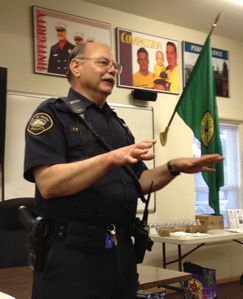 CRIME PREVENTION THROUGH ENVIRONMENTAL DESIGN: This has been a big topic in the area, with the West Seattle Blockwatch Captains Network getting another presentation last month, and it was the topic tonight at the NHUAC forum for visiting SeaTac Police Officer Doug Reynolds. He discussed the principles:
CRIME PREVENTION THROUGH ENVIRONMENTAL DESIGN: This has been a big topic in the area, with the West Seattle Blockwatch Captains Network getting another presentation last month, and it was the topic tonight at the NHUAC forum for visiting SeaTac Police Officer Doug Reynolds. He discussed the principles: